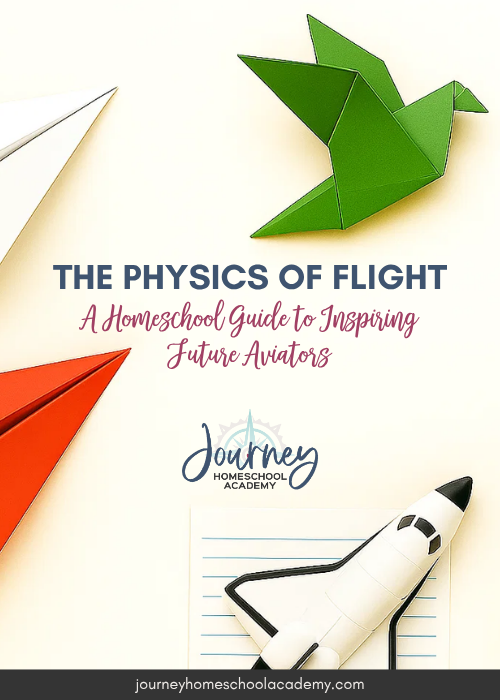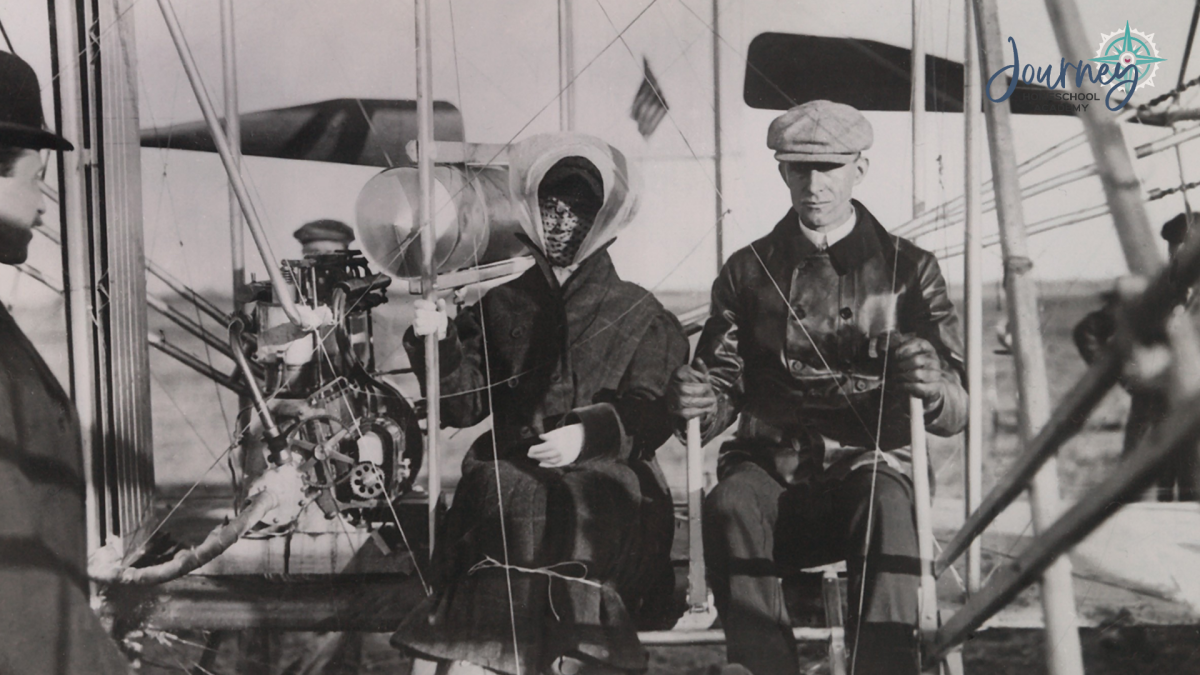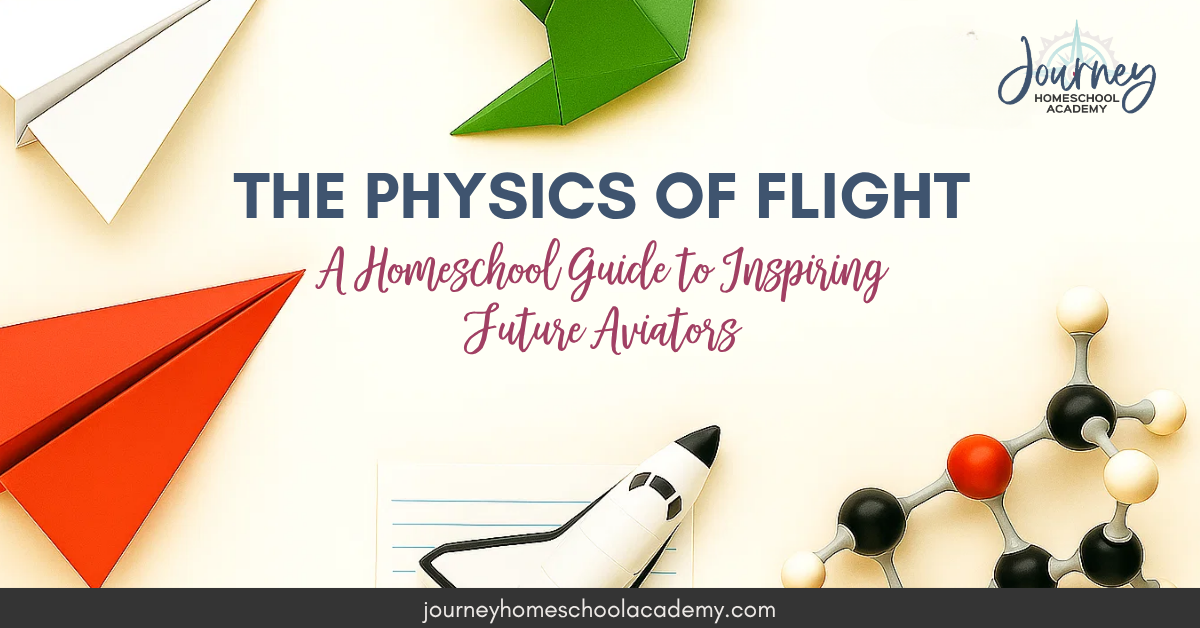Every child dreams of flying at some point—whether it’s folding paper airplanes, flying kites on a breezy afternoon, or staring up at airplanes streaking across the sky. For homeschool families, those moments of curiosity are golden opportunities.
By diving into the physics of flight, you can turn everyday wonder into a launching pad for deeper learning. Teaching your child about lift, drag, and thrust doesn’t just tick off a science requirement—it can inspire future pilots, engineers, and innovators.
And here’s the best part: you don’t need to be a rocket scientist to teach it. With the right tools and resources, you can make homeschool physics hands-on, fun, and full of discovery.
The Physics of Flight: A Homeschool Guide to Inspiring Future Aviators

Why Teach the Physics of Flight in Your Homeschool?
When you teach your child how things fly, you’re not just helping them understand science—you’re opening the door to real-world careers and exciting futures. Aerospace engineering, aviation, drone technology, even space exploration—all of these start with the basics of physics.
- Builds critical thinking: Students learn how to test theories, analyze outcomes, and improve designs.
- Connects to daily life: From frisbees to jet planes, flight surrounds us.
- Faith integration: Studying flight lets us marvel at God’s creation. Birds, insects, and even seeds reveal His intricate design in how they defy gravity and glide through the air.
Homeschooling gives you the flexibility to explore these topics deeply—and connect them to both faith and the future.

Core Physics Concepts Behind Flight
The Four Forces of Flight
The key to understanding flight lies in four simple forces:
- Lift: The upward force that keeps planes in the air.
- Weight: Gravity pulling down.
- Thrust: The push forward.
- Drag: Air resistance holding things back.
Try this: hold a piece of paper under your lip and blow across the top. Watch it lift! That’s Bernoulli’s Principle in action.
Newton’s Laws in the Sky
Newton’s Laws aren’t just textbook jargon—they’re what makes airplanes work.
- Action-reaction: A jet pushes air backward, and the plane moves forward.
- Inertia: Planes keep moving until another force (like drag) acts on them.
Real-World Connections
- Birds are natural aviators, perfectly designed for flight.
- The Wright brothers studied bird wings before designing the first successful airplane.
- Modern aerospace still builds on these same principles.

Hands-On Flight Activities for Homeschoolers
You don’t need a lab full of equipment to teach aerospace principles. Here are some fun, low-cost experiments:
Paper Airplane Experiments
- Fold different wing designs.
- Measure flight distance, speed, and stability.
- Discuss how changes in design affect flight.
(Pro tip: turn it into a family flight competition!)
Build a Simple Glider or Kite
- Explore balance and stability.
- Journal which designs fly best and why.
Drone and Model Rocket Exploration
- For older students, drones and rockets introduce modern aerospace concepts.
- Encourage safety and supervision, but let them explore thrust and propulsion firsthand.

Using Homeschool Physics to Inspire Career Interests
It’s amazing how an early spark of curiosity can turn into a lifelong career.
- Pilots often start with a love of model airplanes.
- Aerospace engineers sometimes begin with backyard rocket launches.
- NASA scientists were once kids asking, “Why does that fly?”
By weaving homeschool physics of flight into your curriculum, you’re giving your child a foundation that could lead to STEM scholarships, internships, or even a career in aerospace.
Journey Homeschool Academy Resources for Aspiring Scientists
You don’t have to tackle advanced physics alone—Journey Homeschool Academy is here to help. Our courses combine expert instruction, hands-on labs, and a Christian worldview:
- Discover Physics: Covers motion, force, energy, and aerodynamics in depth. A great foundation for students considering careers in aviation or engineering.
- Physical Science Explored: A stepping stone into more complex sciences, perfect for introducing concepts like thrust, lift, and energy.
With JHA, you don’t need to be the expert. You simply connect your student to passionate instructors who make science engaging and accessible.

Faith and Flight: Seeing God’s Design in the Skies
Scripture reminds us of the wonder of flight: “They will soar on wings like eagles” (Isaiah 40:31). Studying flight isn’t just about physics—it’s about seeing God’s creative order in action.
- Birds and insects reveal His design in aerodynamics.
- Air itself, invisible yet powerful, shows us how God sustains life.
- Exploring the skies is a way to worship through wonder.
When we integrate faith with science, students don’t just learn how things work—they learn why it matters.
Conclusion: Launching into the Future
Homeschooling gives you the freedom to nurture curiosity, spark imagination, and provide tools that prepare your child for the future. By teaching the physics of flight, you’re not just filling a science credit—you’re opening the door to careers in aviation, aerospace, engineering, or simply a lifelong love of God’s creation.
So, grab some paper, fold some airplanes, and let the adventure begin. Who knows? You might just inspire the next pilot, aerospace engineer, or astronaut sitting at your kitchen table.

